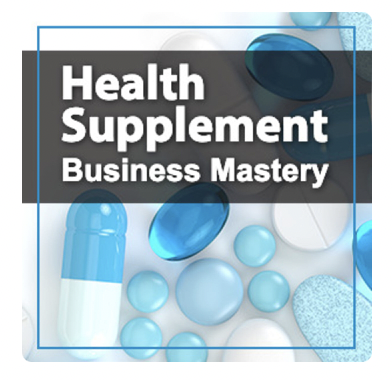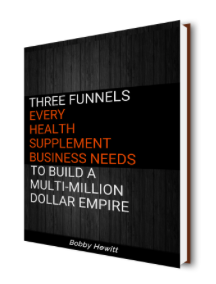People who buy health products are one of the most skeptical buyers around.
Removing risk from their purchase decision is one way to calm the fear of “will this supplement work for me” and turn it into “let me just try it, what do I have to lose?”
One way to remove risk is to offer a strong guarantee.
Based on A/B testing hundreds of variables online for health supplement clients, I’ve seen proof over and over again that confirms my belief that people don’t buy health products the same way they buy any other product online.
On top of that, there is so much skepticism and mis-trust throughout the health market that it’s critical to use risk reversal in your health offer in the right way.
And there certainly is an art to how you use risk reversals to boost conversion and sales online.
Typically, people think the longer the guarantee period, the bigger the refund rate.
So the typical thought is to make your guarantee policy shorter. 30 days for example vs. 180 days. For fear that the guarantee window will increase the amount of returns.
But that’s not really true.
When people have longer to return something they tend to put it off. And the opposite is also true when people have a shorter window they tend to do it right away.
With a 30-day guarantee people are watching the calendar. But with a longer the guarantee period not so much.
Can Your Guarantee Change Over Time?
When BioTrust was scaling their business they offered a 365 day guarantee. now they’ve scale it back to a 60 day guarantee.
Of course this is after they sold their supplement company and perhaps the new owners were not as savvy marketers?
But there is nothing wrong with offering a stronger guarantee when you’re first starting out to remove risk or when you’re scaling your sales to pull in more buyers.
There’s also nothing wrong with testing your guarantee to see which guarantee pulls in the most sales.
In fact for some traffic you might want to offer a bolder guarantee on special cold traffic landing pages. If this sounds like a logistical nightmare, companies often solve it by having an unpublished longer guarantee policy that they honor for phone calls.
Over time as you get more successful it’s natural to want to risk less. But that’s not always good for the customer.
How Bold Should Your Guarantee Be?
Gary Halbert, one of the greatest direct response copywriters in the world said…
“If your refund rate is not high enough you’re not selling hard enough”
~ Gary Halbert
But it’s more than just a big bold guarantee.
The reversal of risk needs to relieve all of the prospects fears.
Most health marketers just think risk reversal is a good strong guarantee with an equally strong headline and catchy guarantee gimmick name like “The Iron Clad 100% Money Back Blah Blah Blah…”
You’ve probably seen things like:
- 100% Money back guarantee
- 100% Satisfaction
- No questions asked
- Hassle-Free
- Better than risk-free
- We’ll buy it back
- Try it before you decide
And you typically see these types of guarantees fall into one or a combination of these ten different types of risk reversal guarantees.
- Conditional Guarantee – the buyer has to qualify to get their money back, typically by sending back the empty health supplement bottle or product.
- Unconditional Guarantee – no strings attached, here’s your money back.
- Money-back Plus Guarantee – where the buyer gets their money back plus they get something else, like an additional $10 perhaps in store credit.
- Performance Based Guarantee – which is based on results. If your product does not get your buyer results, they can return it.
- Time based Guarantee – where your buyer has a limited time to return the product which cal really be any amount of time you set, 365 days, 90 days, 30 days, etc.
- Lifetime Guarantee – where the buyer can return the item at anytime.
- Competitor Challenge Guarantee – where you’re trying to beat a competitor. So if your buyer finds a better product from a competitor they can return it for a refund.
- A Crazy Unique Guarantee – this can take many forms, including but not limited to your money back and a $100 donation to a charity.
- Keep The Bonuses/ Premiums Guarantee – where the buyer keeps all of the bonuses as a free gift.
- Satisfaction Guarantee – Which is a variation of the unconditional guarantee but focuses on complete satisfaction.
Or a combination of several of the different types above.
But when it comes to the art of A/B testing and optimizing risk reversal for revenue, there’s more psychology at play here.
With risk reversals of any kind, most of them out there only focusing on the risk of buying. And as a result, most health marketers and direct response copywriters start and stop at framing risk reversals as a positive vs. a negative.
Here’s an example of a negative frame for a simple conditional time-based guarantee…
“If you are not satisfied for any reason, just return the product within 30 days for a full refund.”
Now let’s look at that same time-based guarantee but with a positive frame…
“You’re either compleatly 100% head over heals satisfied and thrilled, or just return the product within 30 days for a complete and full refund.”
The positive framed example is is how a direct response copywriter would approach the typical risk reversal guarantee.
But the biggest mistake every direct response health marketer / copywriter makes is starting and stopping with the risk of buying the product.
We can’t blame them, they are likely modeling everyone else who is also doing a poor job.
So what does it mean to start and stop with removing the risk of buying the product?
Well the simple money back guarantee does just that, and nothing else actually.
Fundamentally if you don’t like it you’ll get your money back.
But what’s missing is removing ALL of the other risks that your prospect may have, many of which go beyond the purchase of your product and may include things like:
- The risk of lousy results. (Will your product REALLY do what it says?)
- The losing of time for trying this solution.
- The disappointment and frustration caused by trying your solution.
- The loss of “face” of their family and friends for buying this if it does not work.
- The risk of their hope being shattered, which is how they will feel if this product does not work. (They more than likely bought other products to solve the same problem that have let them down before.)
- The hassle or inconvenience of returning the product.
- The risk of being bullied or the perceived intimidation of what canceling might be like. (How many times will they be put on hold and will it need to escalate to a sales manager just to get a refund? Or will they be blocked by some silly “policy”.)
As a direct response focused health marketer you need to make ALL of the prospects risks simply go away not just the risk of financial loss, with a money back guarantee.
In that way risk reversal crosses over with objection handling.
The best way to understand all the different types of risks your prospects feel is to engage them in a real conversation, you won’t uncover this stuff by looking at your Google Analytics.
But once you’ve talked to enough prospects and customers you’ll be able to rank their risks in order of importance to them so that you can use that data in that ranked order to craft your risk reversal copy to show them how it’s truly risk free across all the dimensions that are important to them.
The important thing to remember is that there’s more psychology at play here than anything else and the reversal should not be limited to your guarantee copy or policy.
With so much skepticism and mis-trust throughout the health market, you can’t ONLY focus on just the risk of buying.
You have to remove ALL of the risks and fear your prospect may have in their mind.
Many of those fears extend beyond the purchase of your health and wellness product.
Discover the 3 funnels that can help your health supplement business succeed.

Listen to the Health Supplement Business Mastery Podcast for for dietary supplement entrepreneurs and marketers.



